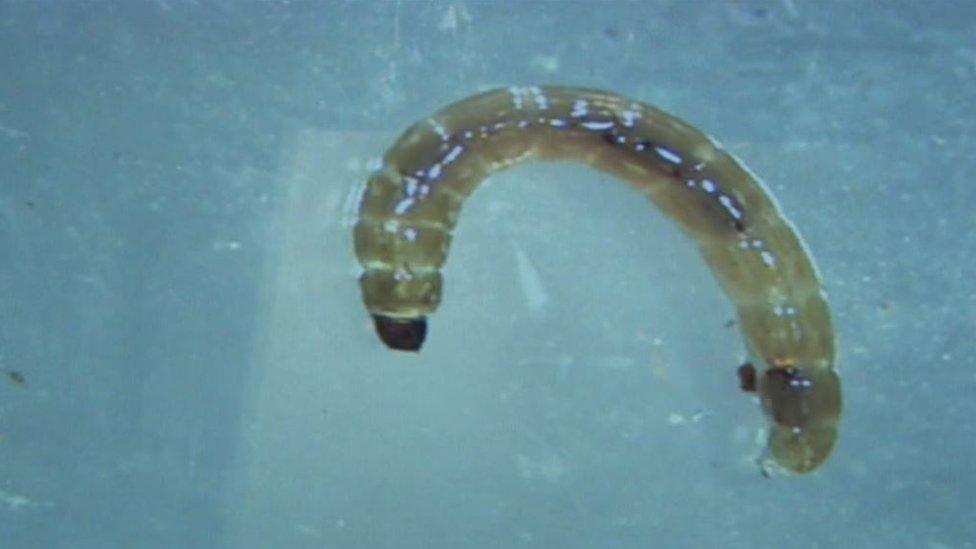When aliens attack Antarctica
- Published

Eretmoptera murphyi, the tiny flightless midge causing all the problems
This tiny bug is technically the largest land animal that lives permanently in Antarctica. (Penguins and seals don't count as they are marine animals.) Unfortunately, it's not supposed to be there and new research from the University of Birmingham has revealed the size of the problems it's causing.
Eretmoptera murphyi is a flightless midge that arrived on the Antarctic island of Signy in the 1960s and, rather embarrassingly, it was brought there by scientists conducting an experiments on plants.
Plants from South Georgia were brought to Signy to see if they could survive the conditions. At the end of the experiment the plants and soil they grew in were all removed but by then it was too late as the midge and its larvae had long moved out and colonised the island.
On the island of Signy the midge larvae are slowly destroying the peaty soils
Although we didn't actually notice this until the 1980s.
So why is this tiny little bug a problem? Well the peaty soils of Antarctica have never seen anything like it. Eretmoptera chews through the soils producing lots of nitrogen. It's acting like an earthworm in an environment that's never seen any earthworms at all.
The end result is the unique soils of this island are becoming much more like the sort of soil you might find in your back garden. Now Jesamine Bartlett from the University of Birmingham has discovered the scale of the damage being done. And this tiny bug is having the same impact on the island as a colony of elephant seals.
The environmental impact of these midges is now thought to be equivalent to that of an elephant seal colony.
It's an extraordinary result, the cumulative scale of change so many tiny creatures can produce. It reinforces the need to make sure the midge cannot spread, especially not to the Antarctic mainland where it could cause irreversible damage on a huge scale.
The one bright spot in this story is this is also research that can help us understand more about invasive species and delicate ecosystems much closer to home.
The ecology of Signy is actually fairly simple. There's still much to study and understand but overall it's a much less complex system than the biology of your back garden. So understanding what's going on in Antarctica will give us real insight into how things work much closer to home.
And the lesson to biologists is don't put plants where they don't belong and make sure you always give your boots a really good scrub.